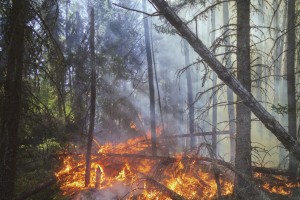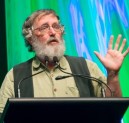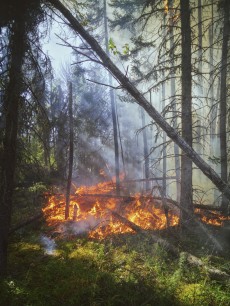
OPINION: Climate action needs a greater sense of urgency
As Canada faces the worst wildfire season in its history Dr Trevor Hancock writes that it’s not just forest fires, and it’s not just Canada.
and it’s not just Canada.
Clearly, climate change is becoming an existential threat to a significant portion of the world’s population, writes the retired Professor and Senior Scholar, University of Victoria in a column for the Times Colonist, a daily newspaper in Victoria, British Columbia, Canada. ((pictured at the 2019 World Health Promotion Conference in Rotorua)
Prof Hancock who also a member of the IUHPE Global Working Group on Waiora Planetary Health and Human Wellbeing chaired by HPF’s Executive Director Sione Tu’itahi emphasises that we need to understand how bad things are getting. '...this is all happening faster than expected'.
On June 12, Bill Blair, federal minister of Emergency Preparedness, said Canada is in the midst of its worst wildfire season in the past 20 years — and it was only mid-June.
Then in a June 20 news release, Environment and Climate Change Canada said we can expect “higher-than-normal temperatures [in] most of the country until at least the end of August.”
[in] most of the country until at least the end of August.”
The release noted “Climate change is already affecting the frequency, duration, and intensity of extreme weather- and climate-related events in Canada,” adding that Canada is warming roughly twice as fast as the global average, and even more in the North.
In particular, Environment and Climate Change Canada added, the forest fires are “driven mainly by higher temperatures and seasonal dryness associated with a warming climate.”
(Photo by Landon Parenteau on Unsplash)
But it’s not just forest fires, and it’s not just Canada.
There is growing evidence that climate change is happening more rapidly and its impacts will be more severe than anticipated.
We need to understand how bad things are getting, that this is all happening faster than expected, and thus how much worse things will soon be without dramatic change.
So here is a summary of some of the most recent evidence on climate change and its impacts.
'... around two billion people, one-quarter of the world’s
population, will be living outside the safe human climate niche
within seven years, and around 3.7 billion people, or one-third of the
population, before the end of the century.'
James Hansen was director of the NASA Goddard Institute for Space Studies from 1981 to 2013 and is a world expert on global climate models. His testimony on climate change at the U.S. Senate in 1988, indicating that “global warming has begun,” was instrumental in putting the issue squarely on the political agenda.
Since 2014, he has directed the Program on Climate Science, Awareness and Solutions at Columbia University’s Earth Institute.
This month, his team released a grim report on climate change titled “Global Warming in the Pipeline.”
My colleague Thomas Homer Dixon, founder and executive director of the Cascade Institute at Royal Roads University and a renowned expert on threats to global security — especially economic instability, environmental stress, ideological polarization and mass violence — has called it “the most important scientific article I’ve read in the last decade.”
In the paper, as Homer Dixon summarizes it, Hansen and his team “argue that the IPCC consensus greatly underestimates the degree and rate of future climate warming.”
Specifically, Hansen’s team states: “Under the current geopolitical approach to GHG [greenhouse gas] emissions, global warming will likely pierce the 1.5 degree C ceiling in the 2020s and 2 degrees C before 2050. Impacts on people and nature will accelerate as global warming pumps up hydrologic extremes.”
Another recent paper by Timothy Lenton and a team of researchers mainly associated with the Global Systems Institute, University of Exeter, identifies who will be affected, and how. The results are alarming. The researchers note there is a “human climate niche” that “is shaped by direct effects of climate on us and indirect effects on the species and resources that sustain or afflict us.”
We (and most of our domesticated crops and livestock) don’t do well above a mean annual temperature (MAT) of 28 C or below a MAT of around 3-4C. Temperatures above 40C (such as we have seen in India recently) can be lethal, and with high humidity (which stops sweating) lethality can occur as low as 35C.
They conclude that climate change has already put more than 600 million people, or nine per cent of the world’s population, outside the safe human climate niche. They then look at what is likely to happen with our current policies, which lead to around 2.7 degrees C global warming.
They find around two billion people, one-quarter of the world’s population, will be living outside the safe human climate niche within seven years, and around 3.7 billion people, or one-third of the population, before the end of the century.
And that is before taking into account the more profound global over-heating that Hansen and his colleagues anticipate.
Clearly, climate change is becoming an existential threat to a significant portion of the world’s population.
The main implication that Thomas Homer Dixon finds is that “our responses to the climate crisis must be far more radical than we’re currently envisioning. Incrementalism is now a waste of time and resources.”
We must pressure our governments to pay attention and act accordingly.
thancock@uvic.ca